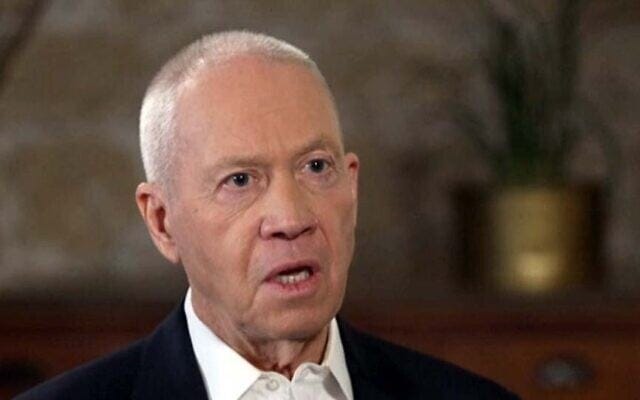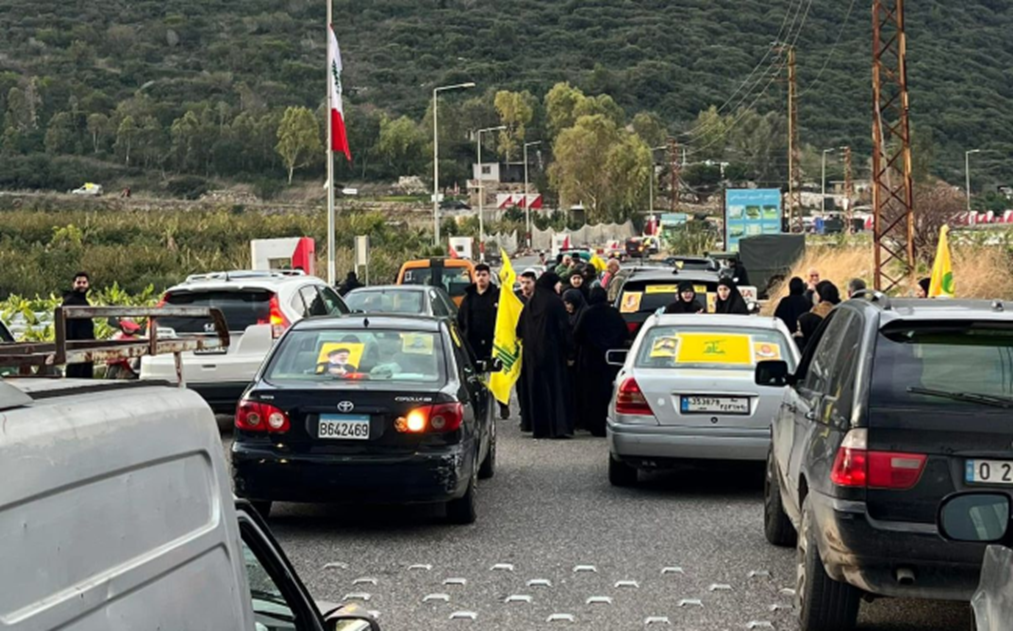Thank you to all my subscribers and followers. You honor me with your presence. If you think this article of value, please share it with others. Please also consider indicating if you see value in the article by “liking” it or adding a comment. Doing so helps me determine the subject of future articles that you might find beneficial and, through social media, broadcasts my work to a wider audience.
On March 23, 1983, I well remember listening to Ronal Reagan deliver a televised speech that subsequently was derisively called his “Star Wars” speech. In it he advocated that the United States should develop a missile defense system that would protect it from ballistic missiles and would therefore render nuclear weapons obsolete and end what he saw as a “suicide pact” – dependence on the doctrine of mutual assured destruction (MAD) to prevent the outbreak of nuclear war. MAD meant that if one side initiated a nuclear war, both sides would be destroyed by it.
Reagan was ridiculed for thinking outside of the box. Then senator Biden said, "Star Wars represents a fundamental assault on the concepts, alliances and arms-control agreements that have buttressed American security for several decades, and the president’s continued adherence to it constitutes one of the most reckless and irresponsible acts in the history of modern statecraft." Kind of similar to the criticism of Trump’s statements February 4.
Soon, the United States initiated a program called the Strategic Defense Initiative in furtherance of Reagan’s dream, called by most the “Star Wars” program. Unfortunately, its goals turned out to be beyond the technical capability of America at that time. But the Russians didn’t know that would be the case. Therefore, in response, they increased their military spending, a move its economy could not afford. Two summits between Reagan and Soviet Premier Gorbachev followed in 1985 and 1986 and Reagan sent a letter to the Soviet leader offering to share the benefits of the missile defense system. Five years later, the Soviet Union collapsed. The Star Wars program was not “the” cause of the collapse but the spending Russia responded with certainly was a factor in the Soviet Union’s dissolution.
While listening to President Trump’s and Prime Minister Netanyahu’s joint press conference two days ago, I was reminded of Reagan’s speech forty-two years ago. It was that astounding and that much out-of-the-box even though the next day aides and administration officials watered down some of Trump’s statements. Nevertheless, I think what Trump said, even if there is little follow through, will change the dynamics in the region for a long time to come. But before I get to all that, let’s establish some basic facts.
Facts on the Ground
2.3 million people live in Gaza.
All of Gaza contains about 139 square miles of land, roughly equivalent to the size of Philadelphia.
Gaza is not now a nation and never has been one. Rather, as stated in Wikipedia (hardly a friend to Israeli causes), “The known history of Gaza spans 4,000 years. Gaza was ruled, destroyed and repopulated by various dynasties, empires, and peoples.” More than five hundred years ago the Ottoman Empire took control of Gaza. During World War I, the British took control of Gaza, followed by Egypt administering Gaza in 1948 and Israel in 1967. Then, in 2005, Israel totally withdrew from Gaza, leaving it to the Palestinian Authority to administer the region. In early 2006, Hamas won local elections, but the Palestinian Authority maintained executive control until 2007 when Hamas violently and literally tossed the PA out (many off roofs to their deaths).
Since 2007, Hamas has initiated multiple wars with Israel, maintained ironclad rule in Gaza, and has made clear it will never accept the permanent existence of Israel.
Now, much of Gaza is uninhabitable, especially in the northern part. Rubble and unexploded ordnance is everywhere. As a result, almost two million civilians were displaced from their homes, many of which lived in massive tent cities in the southwest corner of Gaza. Now, more tent encampments are being constructed in northern Gaza to house the hundreds of thousands that headed north during Phase One of the ceasefire.
All Gazans are now dependent on humanitarian aid.
Since the IDF left much of Gaza per the terms of the ceasefire, Hamas has had unfettered de facto control of the populace in Gaza, still holds hostages, and still lurks in remaining tunnels underground that open into buildings still standing or partially destroyed. In those buildings standing and destroyed, during the fighting, Hamas placed sharpshooters to kill Israeli soldiers and used them to hide weapons and tunnel outlets. Furthermore, to the day the IDF withdrew, its soldiers continued to find more tunnels.
The United Nations estimates that rebuilding Gaza will cost eighty billion dollars.
Rebuilding will be complicated by the massive amount of rubble that needs to be safely carted away, tight spaces, crowded areas, and security concerns.
Concerted efforts to rebuild will take five to fifteen years, depending on conditions on the ground, that include access, financing, and security.
Summary of What Trump Said and Did Not Say About Gaza
“We should go to other countries of interest with humanitarian hearts, and there are many of them that want to do this and build various domains that will ultimately be occupied by the million Palestinians living in Gaza, ending the death and destruction and frankly bad luck.”
“This can be paid for by neighboring countries of great wealth … It could be numerous sites”
“The only reason the Palestinians want to go back to Gaza is they have no alternative …. They instead can occupy all of a beautiful area with homes and safety and they can live out their lives in peace and harmony instead of having to go back and do it again.”
“Gaza is a demolition site … very dangerous and precarious.”
In answer to a question asking if the U.S. would send troops to Gaza to fill the security vacuum—"If it’s necessary we will do that.” And then in a Truth Social Post two days later, he wrote, “"The Gaza Strip would be turned over to the United States by Israel at the conclusion of fighting." Palestinians "would have already been resettled in far safer and more beautiful communities, with new and modern homes, in the region." And then, "No soldiers by the U.S. would be needed!"
“[The US will] take over …[will] own [the Gaza Strip] and … be responsible for dismantling all of the dangerous unexploded bombs and other weapons on the site, level the site and get rid of the destroyed buildings, level it out. Create an economic development that will supply unlimited numbers of jobs and housing for the people of the area.”
“If you go back, it's going to end up the same way it has for years.”
“It doesn't mean anything about a two-state or a one-state or any other state. It means that we want to have - we want to give people a chance at life. They have never had a chance at life because the Gaza Strip has been a hellhole for people living there. It's been horrible. Hamas has made it so bad, so bad, so dangerous, so unfair to people.”
“And by doing what I'm recommending that we do, it's a very strong recommendation, but it is a strong recommendation.” I added the italic emphasis.
Regarding Gaza—" I envision a world - people living there, the world's people. I think you'll make that into an international, unbelievable place. I think the potential in the Gaza Strip is unbelievable. And I think the entire world, representatives from all over the world will be there and they'll live there. Palestinians also. Palestinians will live there. Many people will live there. But they've tried the other and they've tried it for decades and decades and decades. It's not going to work. It didn't work. It will never work. And you have to learn from history. History has - you know, you just can't let it keep repeating itself.”
“We have an opportunity to do something that could be phenomenal. And I don't want to be cute. I don't want to be a wise guy. But the Riviera of the Middle East, this could be something that could be so - this could be so magnificent. But more importantly than that is the people that have been absolutely destroyed that live there now can live in peace in a much better situation because they are living in hell. And those people will now be able to live in peace. We'll make sure that it's done world class.”
Nowhere, did Trump say that Palestinians would be forcibly removed. And see #9 above, he made clear that his suggestion was a strong recommendation, not a command.
Reaction in the United States and Worldwide
Not surprisingly, Trump’s detractors have been stridently opposed, his supporters positive, the Arab world has reacted very negatively, and within Israel the response has been quite varied but often at least mildly positive from even some of Netanyahu’s political opponents.
My View
First and foremost, my view is based hopefully on an objective analysis, not whether I am, or am not, a supporter of President Trump. Instead, my perspective is strongly colored by what I think good for Israel, I consider humane, and in consideration of American interests as well. Before forming my final opinion, I listened to numerous podcasts and read innumerable articles—both pro and con—some passionate and others academic.
Also, I choose to ignore the hopes of some far-right radicals in Israel that Trump’s pronouncement about Gaza means that once again there will be Jewish settlement in Gaza. That is not going to happen. Similarly, I will disregard any antipathy I have for the thousands of Gazans who gleefully cheered and ran along-side Israeli hostages dragged into Gaza on October 7 or that joyfully made a spectacle of their release. I tell myself that even though there are bad Gazans, perhaps the vast majority are not, especially if they can live in dignity without Hamas’ tyranny and indoctrination.
Where that leaves me, bottom line, is that I see much positive in what President Trump said and little downside.
Let me explain why.
Since 1947, and even before, the issue of a state for Palestinians has simmered always, boiled over sometimes, and has resulted in the death and suffering of many Israelis and Palestinians alike. Along the way, there have been many high-minded words, meetings, and hopes. They have included the concept of a two-state solution, the United Nations Partition Plan in 1947, the 1993 Oslo Accords, and the 2002 Roadmap for Peace. To accomplish the grand deal, there have been numerous conferences, meetings, and summits—all for naught. The only constant has been Palestinian refusal to agree to deals that would give them a state—deals that have been increasingly generous over time. Mainly, the break down has come over Palestinian refusal to give up their long-term goal of ending the State of Israel thinly disguised in their insisting on their so called “right to return” which they interpret as requiring Israel to permit any Palestinian, not just those alive in 1948 who lived where Israel is now, to live inside the boundaries of the State of Israel. That of course, would be a recipe for disaster for Israelis. Frankly, there could have been peaceful coexistence long ago if Palestinian leadership wanted peace, truly cared about their citizenry, and had refrained from using their people as pawns by indoctrinating them with hate and Jihadist dreams.
In addition, with regularity, Palestinian terrorists have killed Israeli citizens for decades—both before the Six-Day War and after. Both before Israel allowed settlement in the West Bank and after. Both before some extreme Israeli settlers wrongfully treated Palestinians in the territories (often and for sure inexcusably in response to Palestinian terrorism but sometimes without being prompted too) and after. Both before Israel had a right of center government and after. Meanwhile, since Hamas took over in Gaza and before 2023, Israel defended itself during four different wars instigated by Hamas that ended with ceasefires that Hamas subsequently broke. Then came the fifth war, the most brutal and savage one, once again started by Hamas by breaking a ceasefire on October 7. Israel is determined that there be no more wars with Hamas emanating from Gaza because it will not allow Hamas to remain in Gaza as a governing body. Never again can terrorists coalesce along Israel’s borders!
President Trump agrees that Hamas must be removed from governing Gaza, both by his words, and now his suggested actions. Perhaps it is his long time true feeling that is driving his messaging. Perhaps those feelings were further informed by reports he received from his special envoy to the Middle East, Steve Witkoff. Or perhaps he saw truth while reportedly watching some or all of the 47-minute video spliced together from various sources that depicted Hamas’ depravity on October 7. If so, I could well understand. Since I saw that video in Israel at the IDF’s Spokesperson’s office in December 2023, I have been driven to make a difference.
Anyway, I see what Trump said as a huge step forward. For now, at least, there will not be any public daylight between Israel and the United States that Hamas can exploit. Hamas’ days are now, even more so, numbered. Hamas needs to know that for there to be any chance for release of the remaining hostages in Phase Two on terms Israel can accept. Perhaps then, some combination of Hamas’ voluntary departure from Gaza in return for the release of those still in the dungeons can be negotiated although there is no guarantee that Hamas’ remaining minions won’t favor suicide over survival.
But what is certain is that until Hamas is gone, the Gazan people will suffer devoid of any opportunity for future revival. History doesn’t always repeat itself, but by Hamas’ words and past deeds we know that if that organization remains intact, nobody will be foolish enough to put their money and effort into rebuilding Gaza when they know that there will be another round of fighting that will lay waste to whatever new resources are poured in.
Many of those who hate Trump’s plan focus on details—except there are none now. Only a framework. While the devil is in the details, demonizing a plan because the details have not yet been worked out and negotiated strikes me as putting hate for a person ahead of hope for the Gazan and Israeli people. It reminds me of American opposition to the IDF moving a million people out of Rafah so that the IDF could attack Hamas there without needlessly killing civilians. The U.S. said it couldn’t be done. Israel said it could. After three months of dithering back and forth Israel did it successfully and without American consent. But the delay cost Israeli lives and induced further Gazan suffering. Will implementing Trump’s plan be difficult? For sure. Impossible? Maybe. Illegal? In some forms yes, and in others no.
However, this is what I do know. Reconstruction in Gaza will take many years, more so or maybe not at all if large numbers of civilians remain there. And in what condition will those civilians that remain in Gaza for eons be? Do those that hate the idea of offering decent housing and schools and a life to Gazans elsewhere prefer that they huddle in makeshift tents for more than a decade to make a political point, dependent on handouts and makeshift humanitarian efforts. Do those that hate the idea prefer that Gazan children play among rubble strewn with danger while daily living among environmental hazards of untold proportions? Do those that oppose the idea think there is anything to be gained by having Gazans lose their dignity for so long that they will never recover it, or instead cover themselves with hate directed at Israelis but caused by those that pretend to act or advocate in their interests for an impossible dream?
And why do those who hate the idea of finding alternate homes for Gazans assume they know what is good for them. Who gave them that right? Let the Gazans decide with their feet because until Hamas is destroyed, they surely can’t utter a positive word. Don’t you think that most mothers with children, offered a much better life for their family, would not forsake the opportunity because of their attachment to the torn lands of Gaza ruled by an entity that offers no hope of a better future and the certainty of a cruel present? The mothers in Syria and countless other places throughout history that had the opportunity to flee their native lands in difficult times did so with much less certainty than President Trump’s vision for decent housing and opportunity for Gazans elsewhere. If Egypt will not allow them to settle within its country, at least Egypt must be convinced to allow Gazans out. With the hope of a better life, unimpeded by Hamas, it is my bet that many of them will leave. There, over time, many (but not all) will likely deradicalize if they experience a better life.
And then there is the issue of achieving an Abraham Accords like deal with Saudi Arabia. Saudi opposition to a deal came as no surprise. The Saudis had to oppose it to keep their street happy. But I am reminded of when the UAE traded its agreement to enter into the Abraham Accords in return for Israel giving up annexation of portions of the West Bank at that time. Now, the Saudis have an opportunity. They profess to not be willing to make an Israel recognition deal until there is a Palestinian State (or possibly a clear and definite path for one). But now, the Saudis have an opportunity to propose an alternate plan to Trump’s, or at least some changes that they could parlay into portraying as better benefiting Gazans. If so, that could be their path to a deal with Israel.
Nevertheless, it would be unfair of me not to mention some geopolitical risks. An American presence of any kind, or even a financial interest, could further tie Israel’s hands when its interests diverge with America’s. Should Gazans move to Jordan, the influx of more Palestinians to that country could pose a threat to the Hashemite Kingdom. Similarly, but I think to a much lesser degree, Egypt bears some risk in allowing adherents of a doctrine akin to the Muslim Brotherhood into Egypt. But both nations owe much to the United States for American support. So do many others, Qatar included. Other nations to varying degrees might also be willing to allow Gazans in, especially if pressured, but to be clear, doing so would come at some risk to their stability. And of course, there is no predicting how Hamas will react—but there never is.
But I see it as risks worth taking and pushing nations to assume them a good idea because the alternatives seem even more difficult and far worse. Having the Palestinian Authority take over Gaza is worthless—the PA can’t wrest control of the West Bank from Hamas, has become increasingly corrupt and inept, and is a thinly disguised terrorist entity itself. Asking Israel to administer Gaza is a recipe for constant friction and death, even though it might do it if it must. And, having an international entity administer Gaza without Israeli military support with Hamas still there would fail. And all the while, Gazans would suffer in their tents, forced to rely on donated humanitarian aid in miserable conditions for until years.
What Trump’s pronouncement does is give an opportunity for a new direction. Perhaps that will manifest in his “strong recommendation.” But perhaps also, the new direction that prevails will be one put forward by now motivated other parties, such as Saudi Arabia, the UAE, and other regional actors. For all those individuals here and abroad and nations around the world that oppose Trump’s ideas, the onus is on them come up with an alternative that ends terror domination of Gaza and provides tangible benefits the Gazan people. Because what has been tried has failed spectacularly. Therefore, what Trump has initiated gives me more hope than slavish repeat of past failed concepts.
It is time for a fresh start.

How Israel Almost Wiped Out Hezbollah, Only Days After October 7 - Exclusive—Written by Yonah Jeremy Rob for the Jerusalem Post—February 5, 2025

Gallant: ‘Israel’s Greatest Missed Opportunity’ was not Attacking Hezbollah in Oct. 2023—Written by Times of Israel Staff—February 7, 2027
Israel and the Emerging Trends in Syria—Written by Maj. Gen. (res.) Gershon Hacohen for the Begin-Sadat Center for Strategic Studies—February 4, 2025
Terror Finance at the State Department and USAID—Report prepared by the Middle East Forum—February 1, 2025
Position Paper: Hezbollah Returns to Southern Lebanon – What Can Be Done? - Alma Research and Education Center—Written by Sarit Zahavi and Tal Beeri for the Alma Research and Education Center—January 28, 2025
Lebanon’s Prime Minister-designate is Unlikely to Confront Hezbollah—written by David Daoud for the Atlantic Council—January 29, 2025
Hezbollah Tries a Comeback—Written by Michael Young for Diwan—January 27, 2025
Gaza and Lebanon: Israel’s Real Test Begins After the Ceasefires - Analysis—Written by Herb Keinon for the Jerusalem Post—January 27, 2025

Israel’s Mossad Aims to Thwart Terrorist Attacks Abroad by Released Palestinian Terrorists—Written by Yoni Ben Menachem for Jerusalem Center for Security and Foreign Affairs (JCFA)—January 27, 2025
The IDF’s High-Tech Investments Paid Off, but They Came at a High Cost—Written by Edward Luttwak for Mosaic—January 23, 2025

Can Israel Return to War with Gaza’s North Repopulated? – Analysis—Written by Yonah Jeremey Bob for the Jerusalem Post—January 28, 2025
Hamas May Be Cheering, But It Is Writhing in Pain—Written by Ehud Yaari for the Washington Institute for Near East Policy—January 26, 2025

Lebanese Army Chief Exposed for Leaking Secrets to Hezbollah During Ceasefire—Written by Yonah Jeremey Bob for the Jerusalem Post—January 27, 2025

How Leading Experts Got Israel's Economy Wrong – Opinion—Written by Ran Kivetz, Jonathan Barnett for the Jerusalem Post—January 28, 2025
Israel’s Struggle with Hezbollah—A War Without End is now available in eBook and hardback format on Amazon and IngramSpark. This compelling narrative explores Hezbollah’s origins and cancerous growth, traces Israel’s response, and reveals Israel’s present readiness to meet Hezbollah’s challenge.
Cliff Sobin
Important Link—Alma Research and Education Center: Understanding the Security Challenges on Israel’s Northern Border









